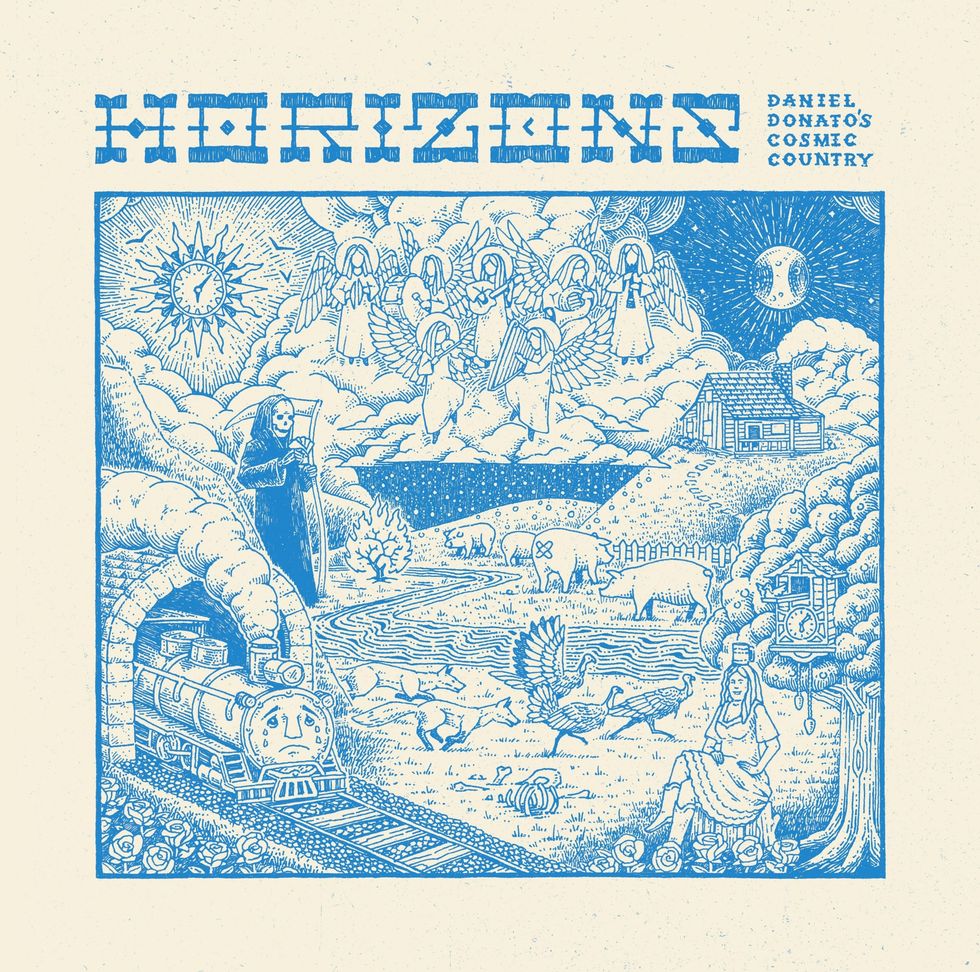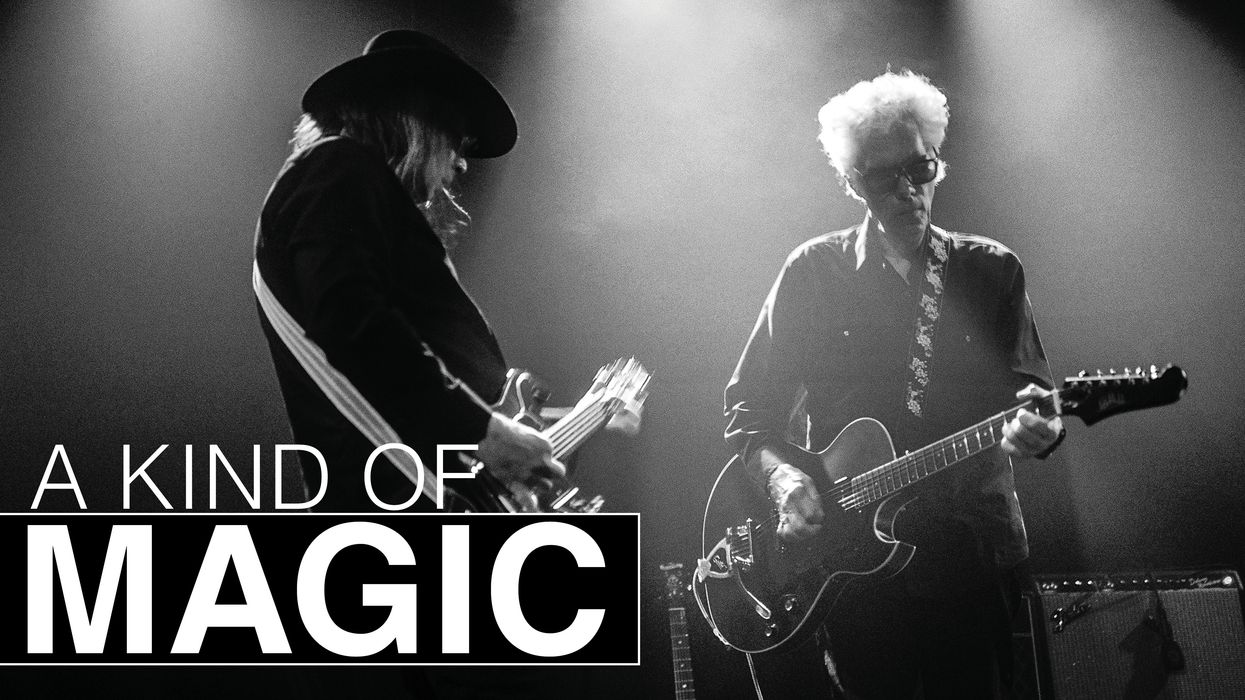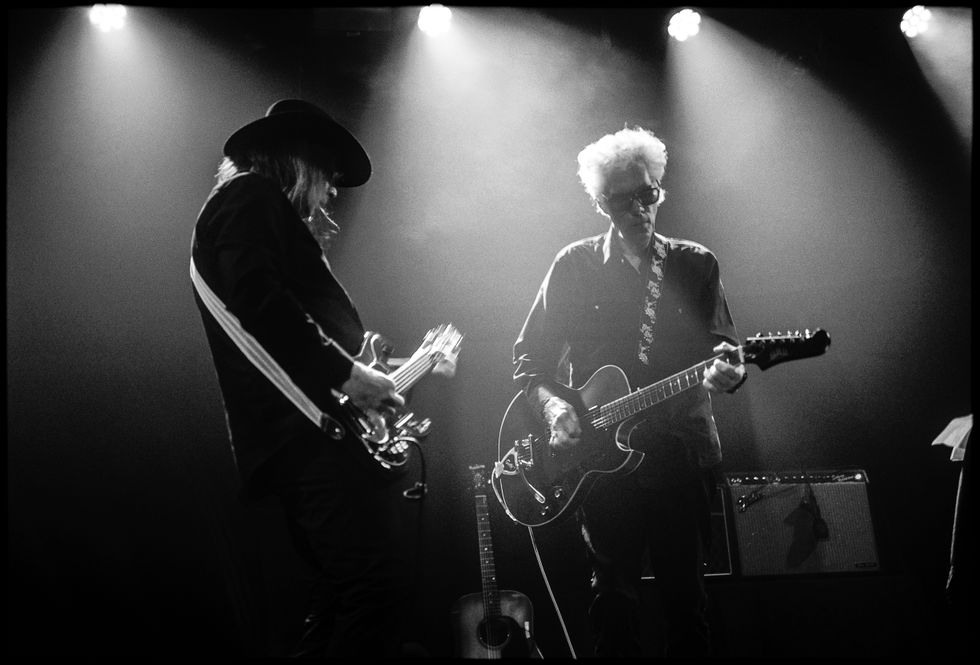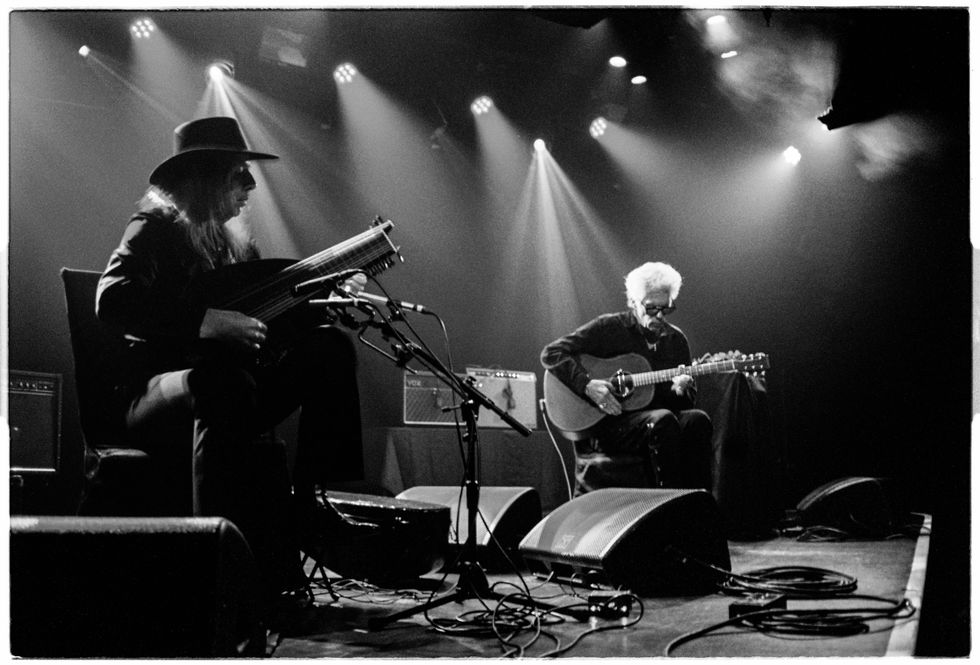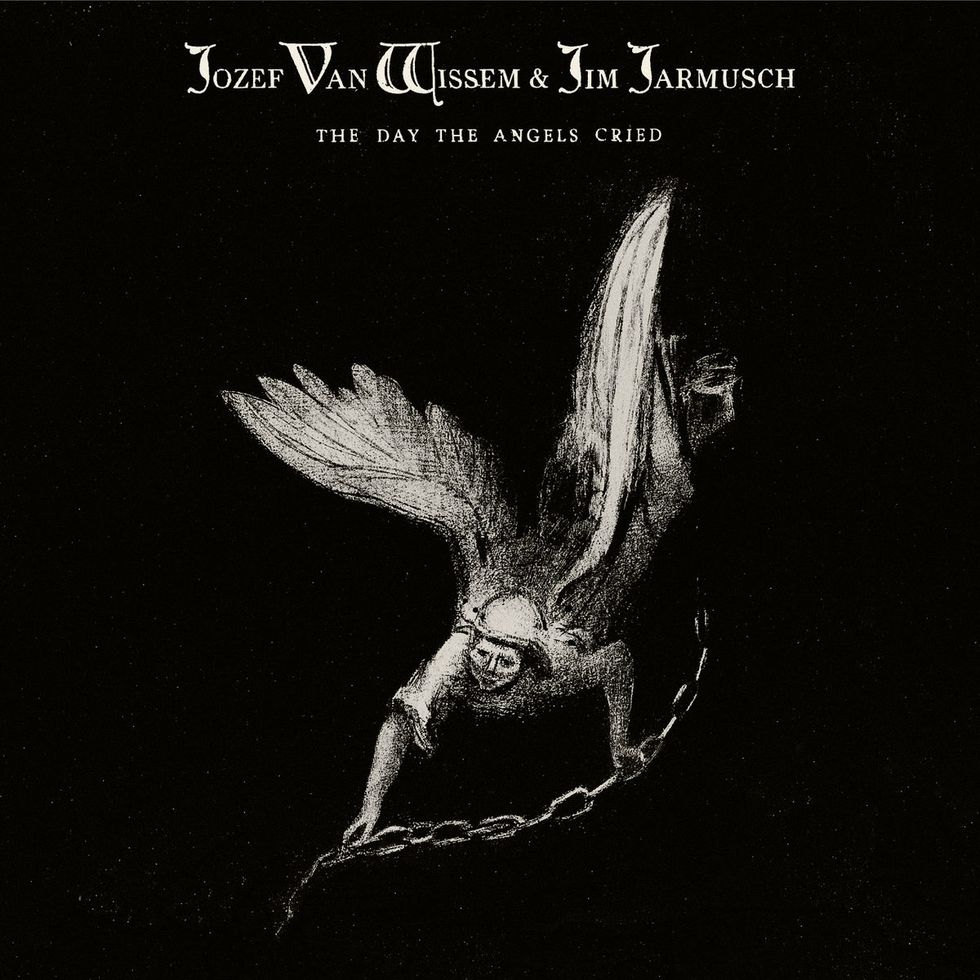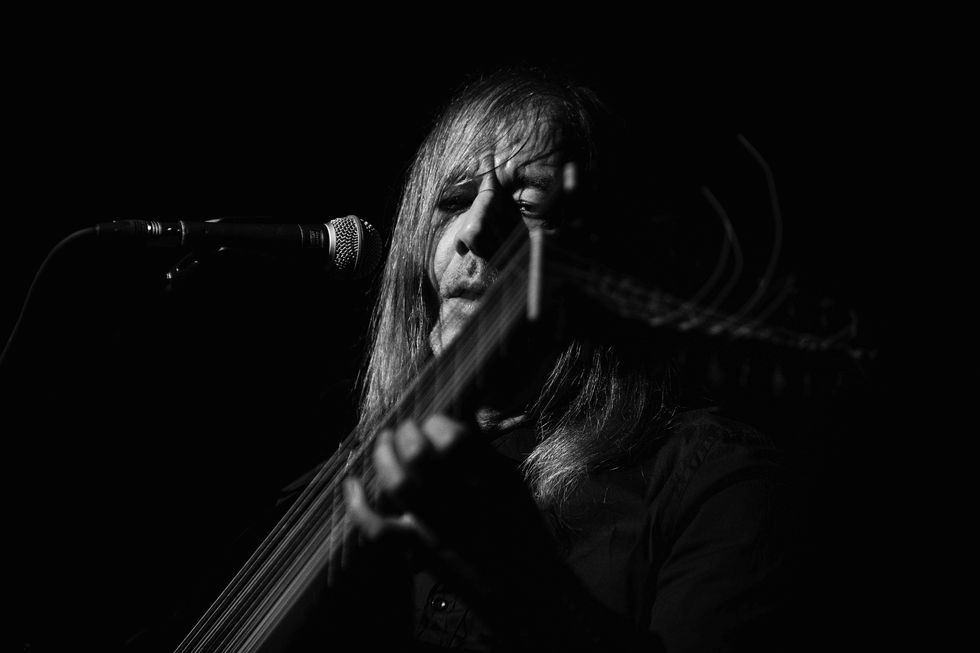Bob Mould wrote his last album, Blue Heart, as a protest record, ahead of the 2020 American election. As a basic rule, protest music works best when it's shared and experienced communally, where it can percolate and manifest in new, exciting disruptions. But 2020 wasn’t exactly a great year for gathering together.
Mould’s album landed in a world of cloistered listeners, so he never knew how it impacted people. For a musician from punk and hardcore scenes, it was a disquieting experience. So when he got back out on the road in 2023 and 2024, playing solo electric sets, the former Hüsker Dü and Sugar frontman was determined to reconnect with his listeners. After each show, he’d hang out at the merch table and talk. Some people wanted their records or shirts signed, some wanted a picture. Others shared dark stories and secret experiences connected to Mould’s work. It humbled and moved him. “I’m grateful for all of it,” he says.
These are the in-person viscera of a group of people connecting on shared interests, versus, says Mould, “‘I gotta clean the house today, so I’m going to put on my clean the house playlist that a computer designed for me.” “Everything has become so digitized,” he laments. “I grew up where music was religion, it was life, it was essential. When people come to shows, and there’s an atmosphere, there’s volume, there’s spilled drinks and sweat–that’s what music ritual is supposed to be.”
His experiences on tour after the pandemic heartened Mould, but they also gave him traction on new ideas and direction for a new record. He returned to the simple, dirty guitar-pop music that spiked his heart rate when he was young: the Ramones’ stupid-simple pop-punk ecstasy, New York Dolls’ sharp-edged playfulness, Pete Townshend’s epic, chest-rattling guitar theatrics. In other words, the sort of snotty, poppy, wide-open rock we heard and loved on Hüsker Dü’s Flip Your Wig and Candy Apple Grey.

Mould’s time on the road playing solo in 2023 sparked the idea for Here We Go Crazy.
Photo by Ryan Bakerink
Mould started writing new songs in the vein of his original childhood heroes, working them into those electric solo sets in 2023 and 2024. Working with those restraints—guitar chords and vocal melodies—put Mould on track to make Here We Go Crazy, his new, 15th solo record.
Lead single and opener “Here We Go Crazy” is a scene-setting piece of fuzzy ’90s alt-rock, bookended by the fierce pounding of “Neanderthal.” “When Your Heart is Broken” is a standout, with its bubblegum chorus melody and rumbling, tense, Who-style holding pattern before one of the album’s only solos. Ditto “Sharp Little Pieces,” with perhaps the record’s chewiest, darkest guitar sounds.
“It’s a very familiar-sounding record,” he continues. “I think when people hear it, they will go, ‘Oh my god, this is so Bob Mould,’ and a lot of that was [influenced by] spending time with the audience again, putting new stuff into the set alongside the songbook material, going out to the table after the show and getting reactions from people. That sort of steered me towards a very simple, energetic, guitar-driven pop record.”
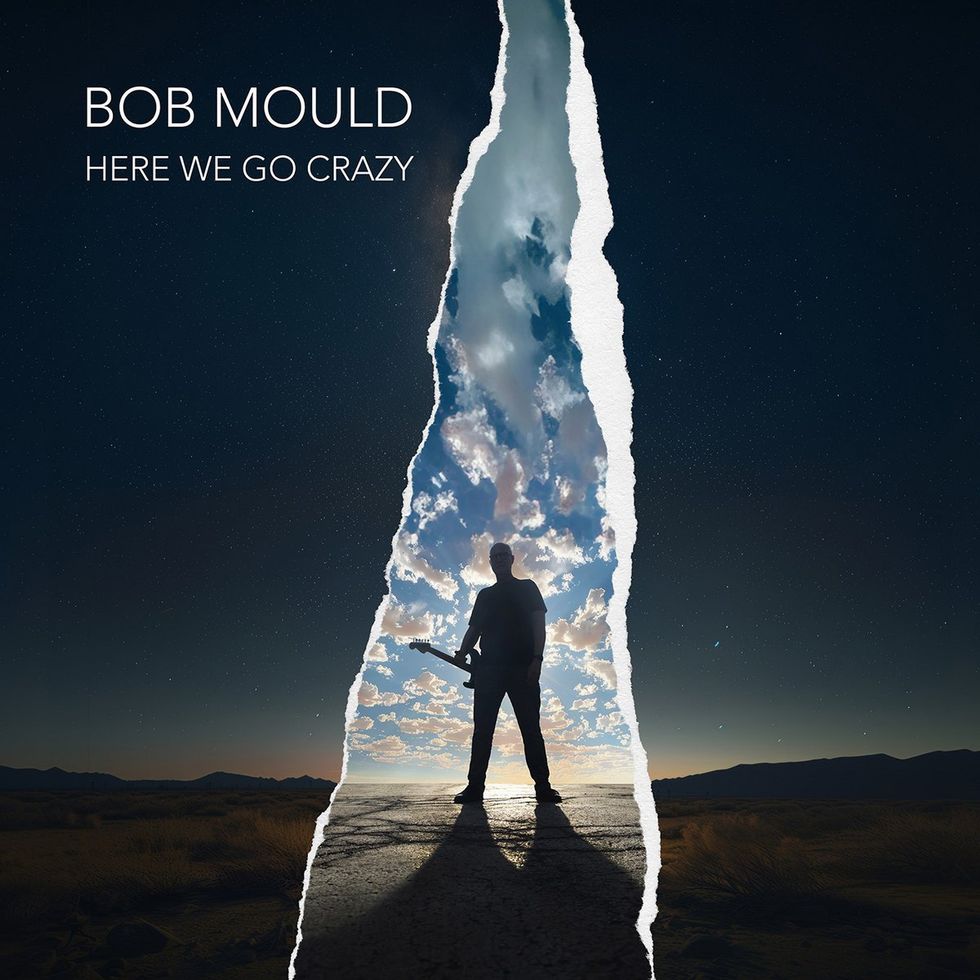
Of his new album, Mould says, “I think when people hear it, they will go, ‘Oh my god, this is so Bob Mould.’”
Mould recorded the LP in Chicago with longtime bandmates Jason Narducy and Jon Wurster at the late, great Steve Albini’s Electrical Audio. Then Mould retreated to San Francisco to finish the record, chipping away at vocals and extra guitar pieces. He mostly resisted the pull of “non-guitar ornamentation”: “It’s a rhythm guitar record with a couple leads and a Minimoog,” he says. “It’s sort of cool to not have a 64-crayon set every time.”
Mould relied on his favorite, now-signature late-’80s Fender Strat Plus, which sat out on a runway at O’Hare in 20-below cold for three hours and needed a few days to get back in fighting shape. In the studio, he ran the Strat into his signature Tym Guitars Sky Patch, a take on the MXR Distortion+, then onto a Radial JD7. The Radial split his signal and sent it to three combo amps: a Fender Hot Rod DeVille, a Fender ’68 Custom Deluxe Reverb reissue, and a Blackstar Artisan 30, each with a mic on it. The result is a brighter record that Mould says leaves more room for the bass and kick drum. “If you listen to this record against Patch the Sky, for instance, it’s night and day,” he says. “It’s snug.”
Mould explains that the record unfolds over three acts. Tracks one through five comprise the first episode, crackling with uncertainty and conflict. The second, spread over songs six to eight, contrasts feelings of openness with tight, claustrophobic tension. Here, there are dead ends, addictions, and frigid realities. But after “Sharp Little Pieces,” the album turns its corner, barreling toward the home stretch in a fury of optimism and determination. “These last three [songs] should give us more hope,” says Mould. “They should talk about unconditional love.”
The record closes on the ballad “Your Side,” which starts gentle and ends in a rush of smashed chords and cymbals, undoubtedly one of the most invigorating segments. “The world is going down in flames, I wanna be by your side/We can find a quiet place, it doesn’t need to be the Albert Hall,” Mould starts. It’s a beautiful portrait of love, aging, and the passage of time.
Bob Mould's Gear

Photo by Mike White
Guitars
- Late 1980s Fender American Standard Strat Plus (multiple)
Amps
- Fender Hot Rod DeVille
- Blackstar Artisan Series amps
- Fender '68 Custom Deluxe Reverb
Effects
- Tym Guitars Sky Patch
- TC Electronic Flashback
- Electro-Harmonix Freeze
- Wampler Ego
- Universal Audio 1176
- Radial JD7
Strings, Picks, & Power Supply
- D'Addario NYXLs (.011-.046)
- Dunlop .46 mm and .60 mm picks
- Voodoo Labs power supply
And though the record ends on this palette of tenderness and connection, the cycle is likely to start all over again. Mould understands this; even though he knows he’s basking in act three at the moment, acts one and two will come along again, and again. Thankfully, he’s figured out how to weather the changes.
“When things are good, enjoy them,” he says. “When things are tough, do the work and get out of it, somehow.”
- YouTube
Many of the tracks on Here We Go Crazy were road-tested by Mould during solo sets. Here, accompanied only by his trusty Fender Strat, he belts “Breathing Room.”





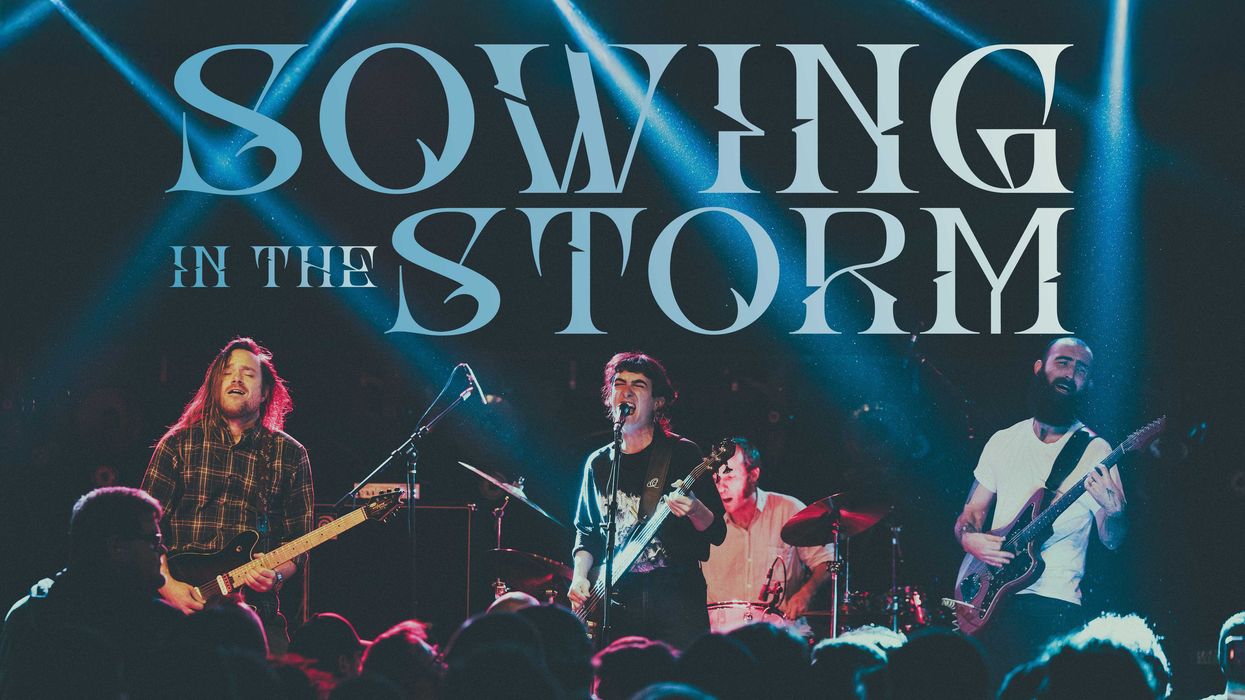
![Devon Eisenbarger [Katy Perry] Rig Rundown](https://www.premierguitar.com/media-library/youtube.jpg?id=61774583&width=1245&height=700&quality=70&coordinates=0%2C0%2C0%2C0)








































